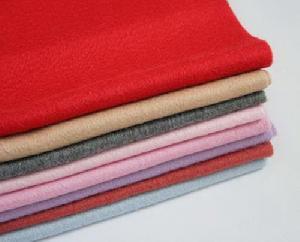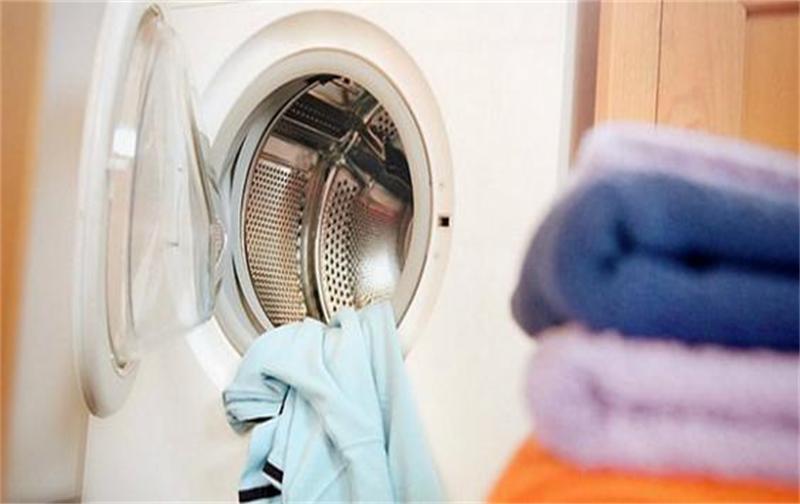Popular science on the problem of washing clothes
Common cognitive misunderstandings
1. Do I need to soak before washing clothes?
Soaking is not mandatory, but I recommend soaking. Especially when using washing powder and new liquid soap, it is recommended to soak first and then wash. The laundry is best to follow the following procedures: melt (stir) detergent, put in the laundry, soak, wash, rinse (softener is added in the last rinse).
Many people don't pay much attention to the soaking process when doing laundry. I have a very lazy friend who has washed clothes before. His laundry procedure is like this: Throw the clothes in the water, sprinkle a handful of washing powder, do not stir evenly to dissolve the washing powder, eat a meal and sleep, and then rinse the soaked clothes. Wash the clothes off. Because he used whitening washing powder, a handful of washing powder was sprinkled on, and it was not evenly stirred to dissolve, and it stuck to the clothes for a long time, causing the local concentration to be too high, and the clothes were partially faded
In fact, when soaking, the surfactant contacts with the dirt and transfers the emulsified dirt to the solution, loosening the binding fastness of the dirt and the fabric, making it easier to wash. So when washing, it is best to soak for 20-30 minutes first.
2. The more washing powder/liquid foam, the cleaner the washing?
This is a common misunderstanding. It is believed that the more foam, the stronger the cleaning ability and the cleaner the washing. In fact, the cleaning ability of a detergent has nothing to do with the amount of foam, and has nothing to do with the type and quantity of builders, and is mainly related to surfactants. Different types of surfactants have different foaming power. For example, the anionic surfactant commonly used in washing powders-sodium alkylbenzene sulfonate, has a higher foaming power and a foam height of 220mm; non-ionic surfactants-ethylene oxide adducts have lower foam and are 180mm. Generally, high-foaming detergents are more suitable for hand washing, low-foaming detergents are more suitable for machine washing, and medium-foaming detergents are suitable for both machine washing and hand washing.
3. The stronger the washing powder/liquid, the cleaner the washing?
It is also a misunderstanding. Many parents believe that the stronger the detergent, the cleaner the washing. When I buy a particularly dilute laundry detergent, I always feel that I have bought a fake product. In fact, this is not the case. The thickness of laundry detergent is reflected in its viscosity. The viscosity of laundry detergent has nothing to do with detergency, and the viscosity is related to the type and amount of tackifier added, and it is also related to temperature. The same product is thinner in summer and sticky in winter.

4. Is the more washing powder/liquid added, the cleaner it will be?
Many people think that the more detergent/liquid added, the cleaner the clothes will be washed, but this is not the case. This is a common misunderstanding. When the washing powder/liquid reaches a certain amount, the detergency will no longer increase with the added amount of washing powder/liquid.
The detergency curve of three standard soiling cloths under different washing concentration of standard powder:

In addition, excessive washing powder/liquid will increase the alkalinity of the solution and damage the fibers of the clothes. In addition, a large amount of washing powder/liquid remains on the clothes, and rinsing is more water-consuming, time-consuming and laborious, which not only wastes washing powder/liquid, but also increases the burden of sewage treatment. Therefore, just add the washing powder/liquid according to the instructions. For particularly dirty stained areas, you can pour washing powder/liquid to scrub, and then perform normal cleaning.
5. Why do the clothes become harder as they are washed?
First of all, the clothing is usually softened before leaving the factory. As the number of washing increases, the original softener of the clothing is gradually washed away, and it will lose its elasticity, not soft, not fluffy, and harder;
Secondly, during the washing process, due to the action of mechanical force, the fibers of the fabric will be entangled with each other, resulting in loss of elasticity;
Third, in areas with relatively hard water, there are more calcium and magnesium salts in the water, and drying clothes can only volatilize the water, but calcium and magnesium salts remain in the fabric fibers. The more washing times, the harder it will be. This phenomenon is most obvious on face towels. Many people have had this experience, that is, the harder the towel becomes.
6. Is there a way to deal with the harder and harder the laundry becomes?
Yes, use fabric softener. The fabric softener is not used to clean, but to make the fabric soft, fluffy and eliminate static electricity. It is generally used with washing powder/liquid detergent. The hardness of water in northern my country is high, and fabric softener should be used.
7. How does the softener make the fabric soft, fluffy and antistatic again?
The main component of fabric softener is cationic surfactant. When dissolved in water, the ions released by the cationic surfactant are positively charged, and these positively charged ions will be adsorbed on the negatively charged fabric fibers. At this time, the surface of the fabric is as if covered with a layer of oil film. The hydrophobic ends of the cationic surfactant are parallel to the outside, and at the same time prevent the adsorption of calcium and magnesium ions, which not only reduces the friction and roughness of the fabric itself, but also prevents scale The formation of the layer (similar to applying skin care products on the skin) greatly improves the softness of the clothes. At the same time, the hydrophobic groups are parallel to the outside, which acts as a spatial isolation between the fabric fibers, not only making the fabric fibers flat and not entangled, but also making the fluffy effect better. The antistatic function of fabric softener is also attributed to cationic surfactants. It can effectively absorb the negative charge on the surface of the clothes to reduce the static electricity generated by friction, and at the same time it can reduce the static friction coefficient between the fibers.
8. Can fabric softener be used with detergent powder/liquid at the same time?
The active ingredient of fabric softener is cationic surfactant, and the active ingredient of washing powder is anionic surfactant. When washing powder and fabric softener are used at the same time, cationic surfactants react with anionic surfactants to form water-insoluble macromolecular compounds. At this time, the positive and negative charges cancel each other out, and the anion and cation are invalidated at the same time, which eliminates the cleaning ability Also eliminates compliant ability.
Of course, as mentioned above, the effective ingredients of laundry detergent are generally nonionic surfactants, which should not react with the cationic surfactants in the softener, but to be safe, it is recommended that the laundry powder/liquid not be used with the fabric softener at the same time. Be sure to add the softener during the last rinse after washing the clothes.
For dyeing clothes, especially cotton and wool fabrics, anionic dyes are basically used. It may also react with cationic surfactants in the softener and fade, so try first before using.
9. The thicker the fabric softener, the better?
Like laundry detergent, the viscosity of the fabric softener has nothing to do with the quality and the content of the effective substances. Its quality is related to the variety and quantity of cationic surfactants.

10. Does ordinary laundry detergent have sterilization function?
Ordinary laundry detergent also has a sterilization function. Surfactant has good permeability. It can denature the protein and cause cell death when it penetrates into the cell, and it can also be adsorbed on the cell membrane to make it inactive. For example, the cationic surfactant 1227 is not used as a softener but as a fungicide because of its short alkyl chain and poor lipophilicity. Non-ionic surfactant nonylphenol polyoxyethylene ether, combined with iodine is iodophor, which has good detergency and good sterilization function.
In addition, some plant extracts in detergents also have certain antibacterial and bactericidal effects. Such as scutellaria baicalensis extract, chamomile extract, tea extract, olive fruit extract, wormwood extract and so on. Therefore, ordinary laundry detergent has a certain antibacterial and sterilization function, which can remove at least half of the bacteria on the clothes.
11. Is it necessary to use sterilizing and disinfecting laundry detergent?
Sterilization and antibacterial words are very common in the packaging of laundry detergent. Sterilization and bacteriostasis are mainly to add a bactericide or bacteriostatic agent to the laundry liquid; disinfecting laundry liquid requires adding a disinfectant to the laundry liquid.
In specific periods, such as the southern rainy season, when it is humid and rainy for a long time, and bacteria are prone to breed, you can use a disinfectant laundry detergent. It is not recommended to use it frequently. Because disinfectants are usually more irritating and have a high risk of allergies, several disinfectants are usually added to the disinfectant laundry detergent at the same time. Long-term use will not only greatly increase the risk of allergies, but also cause The production of resistant strains.








